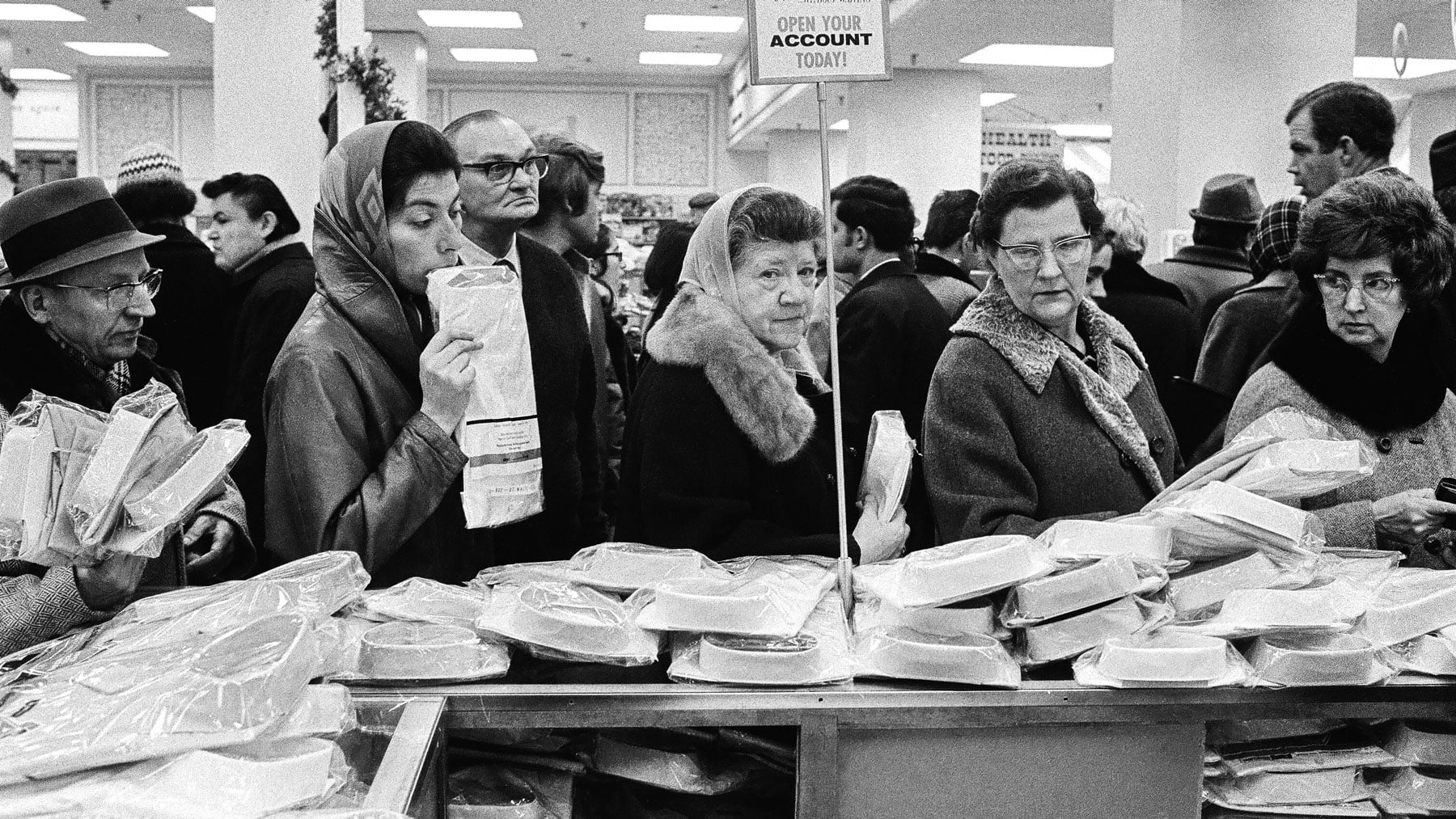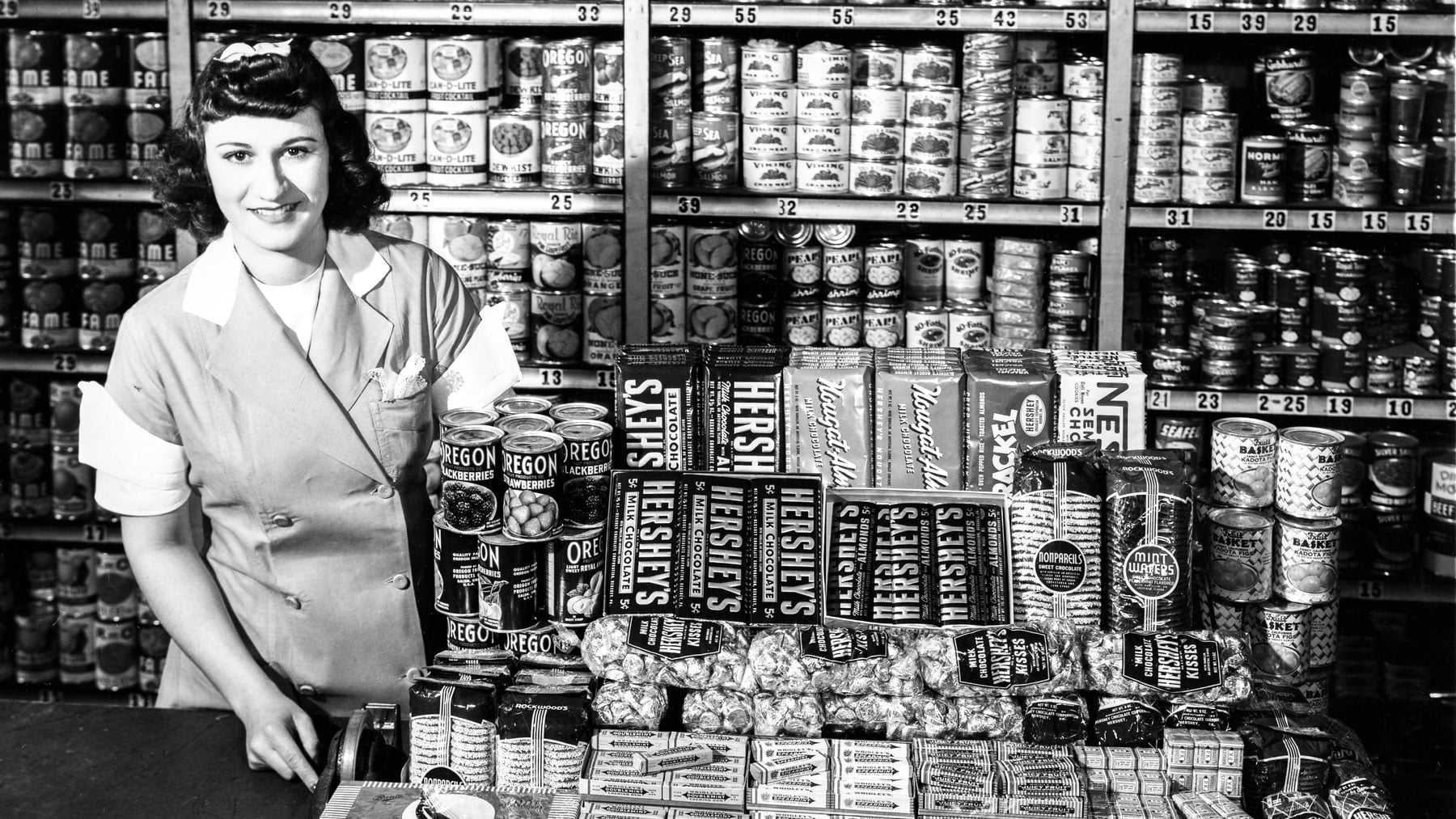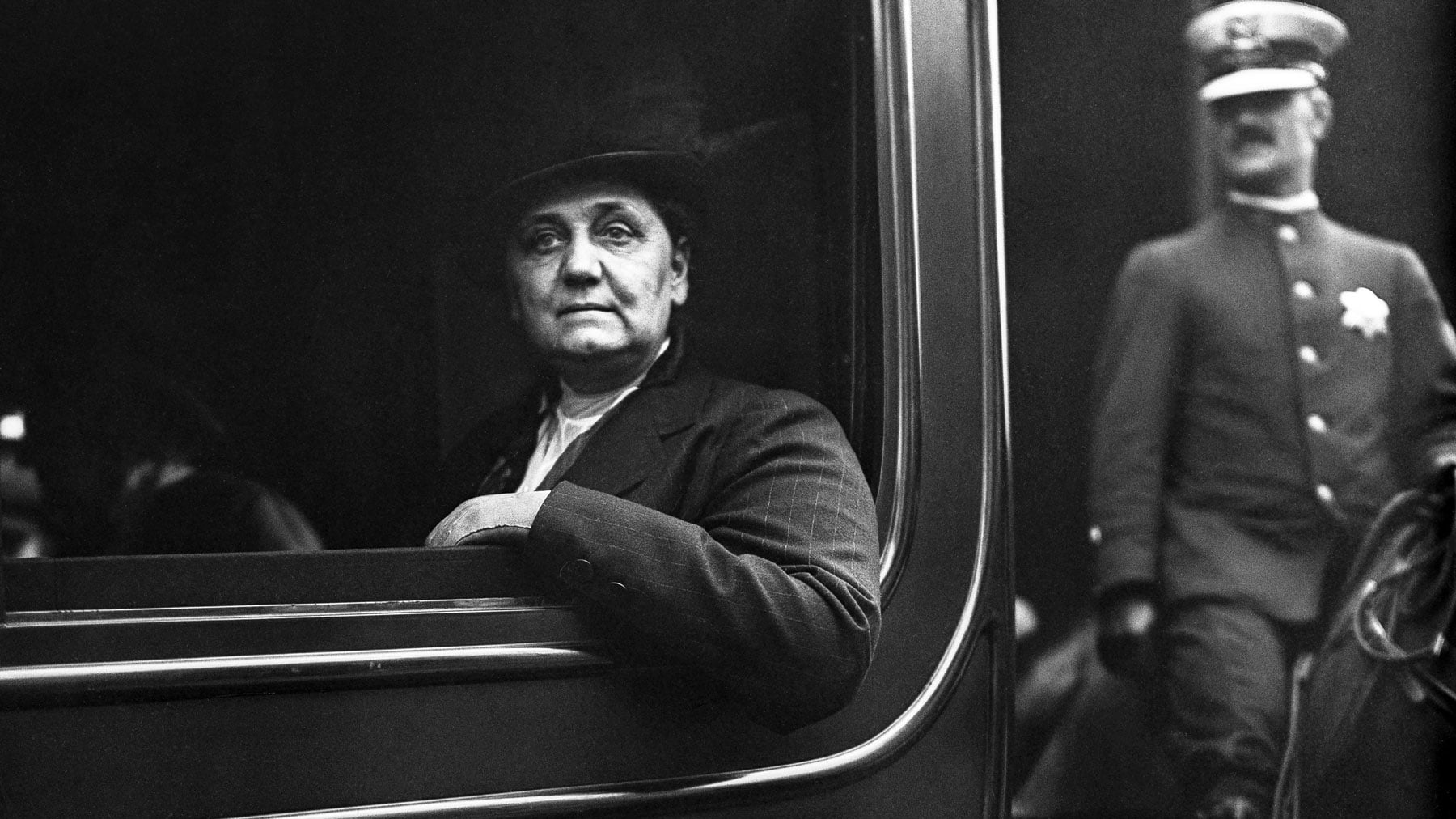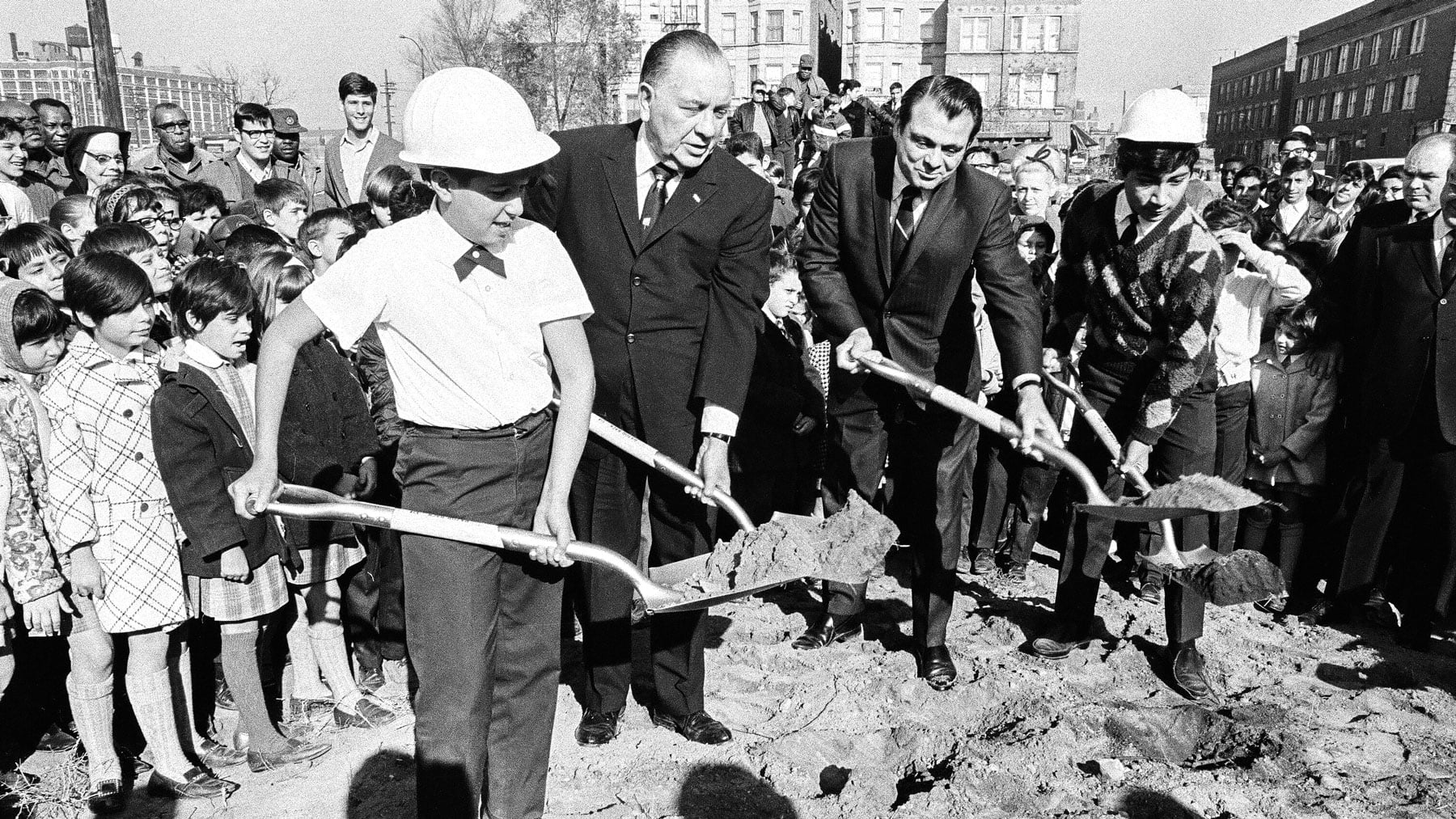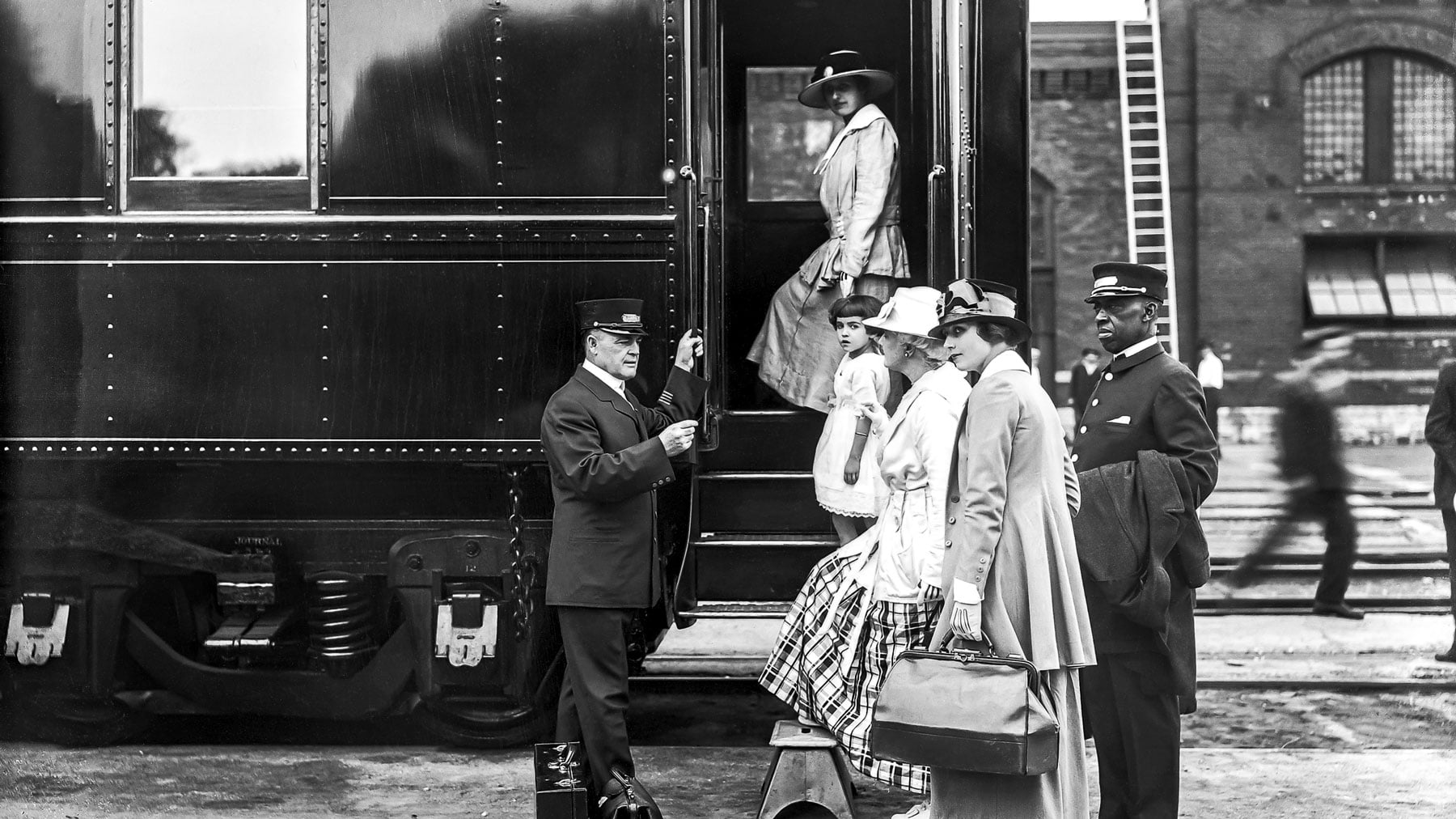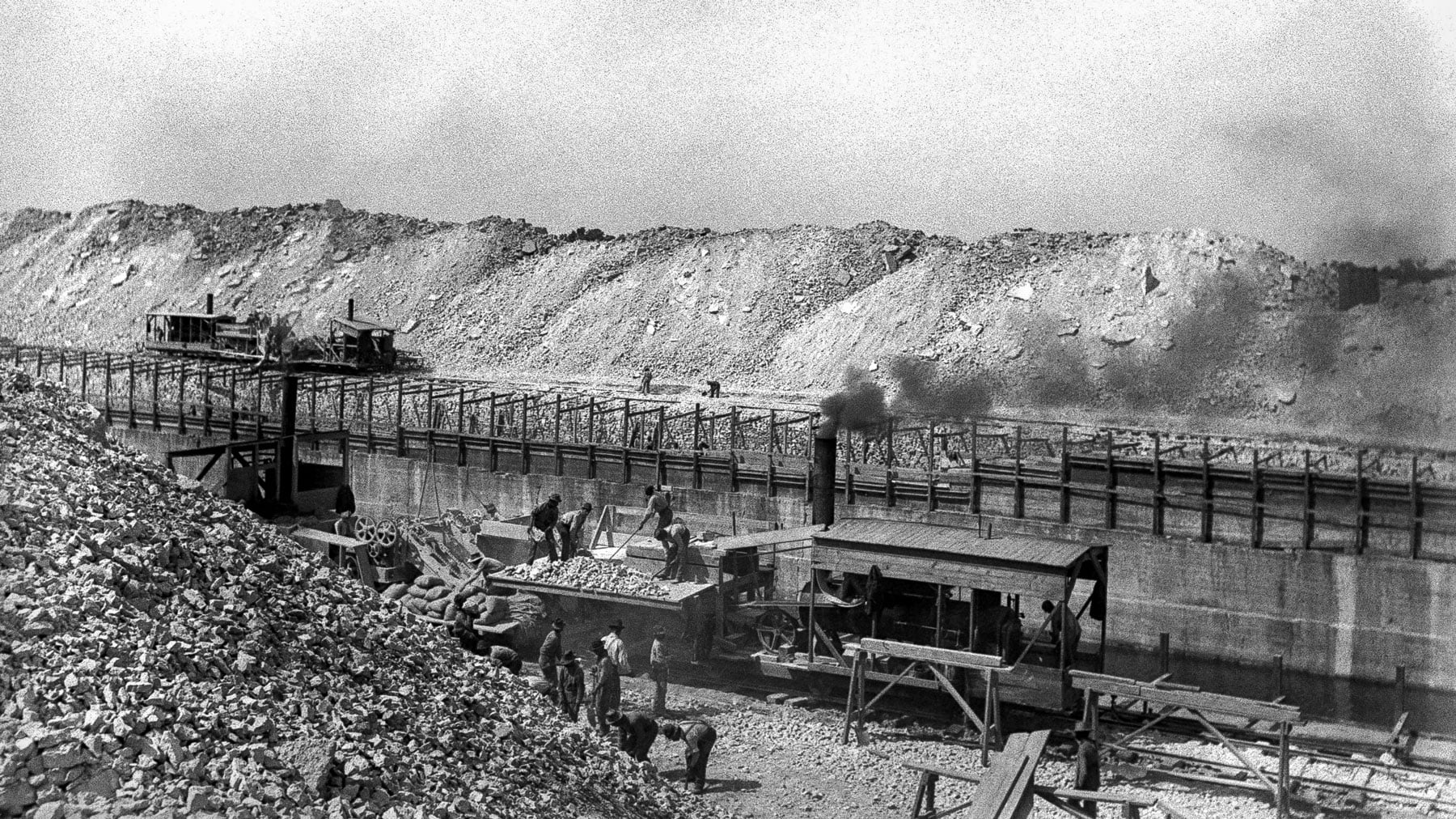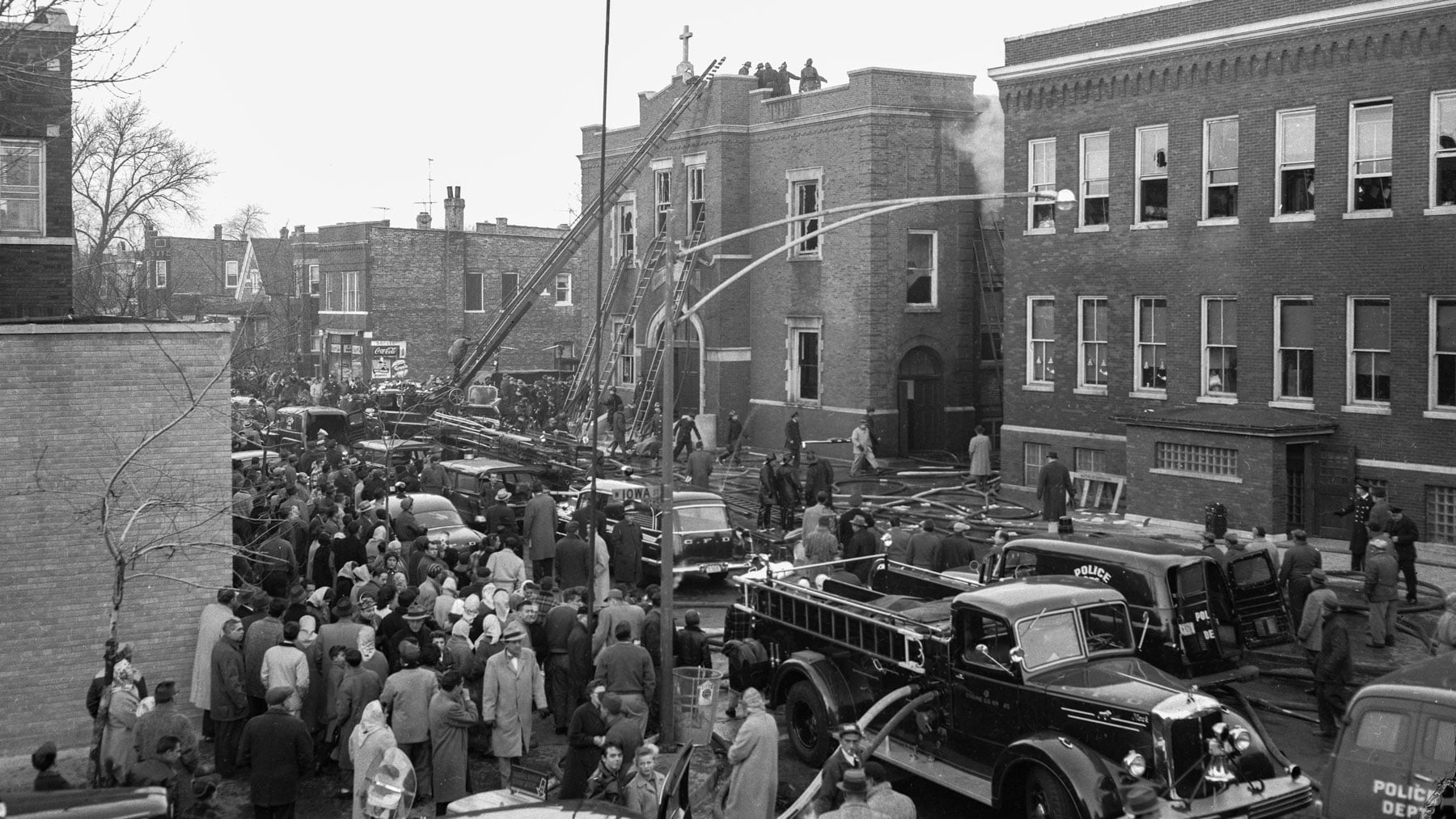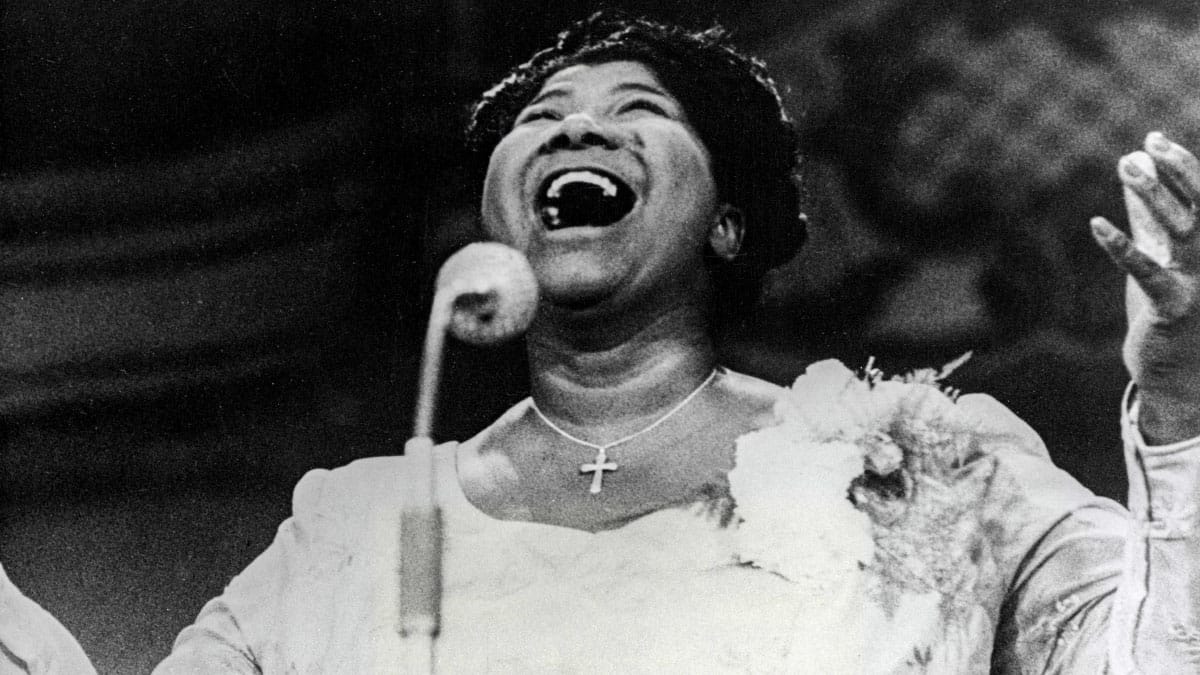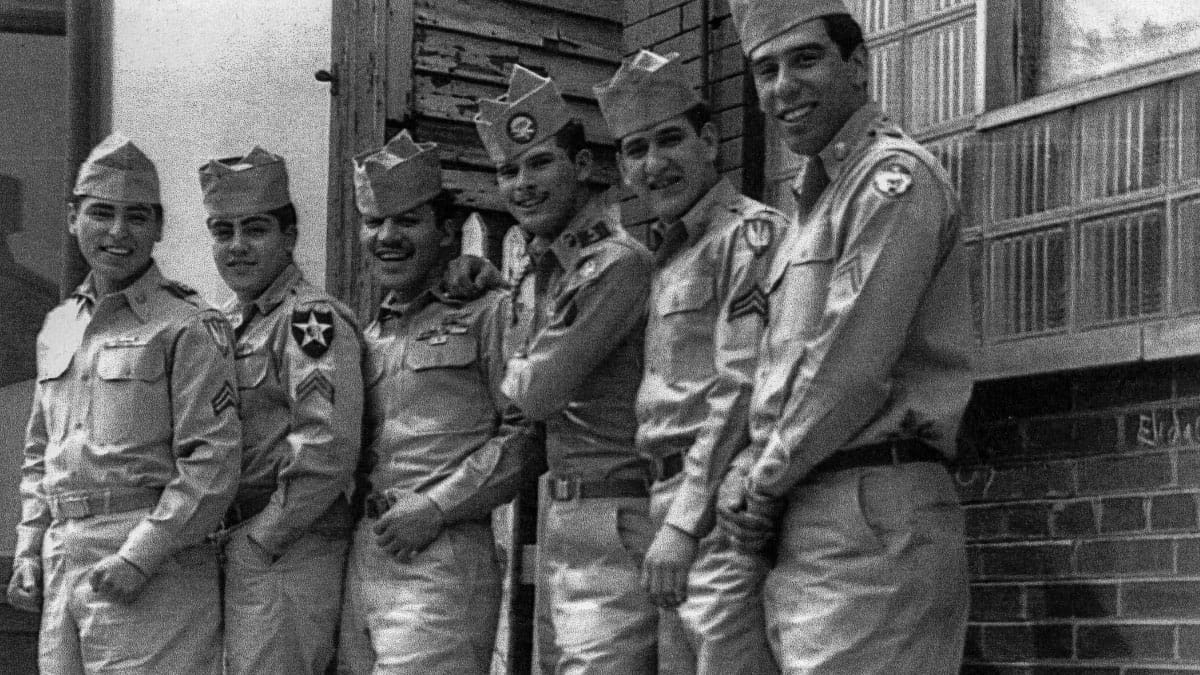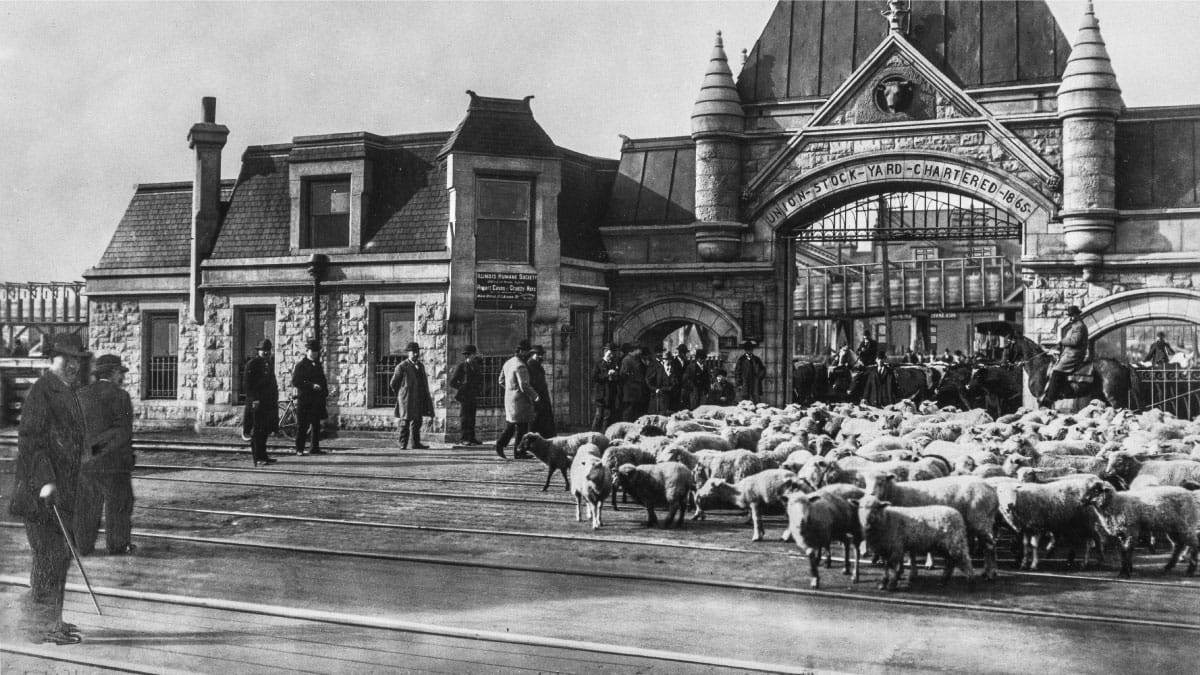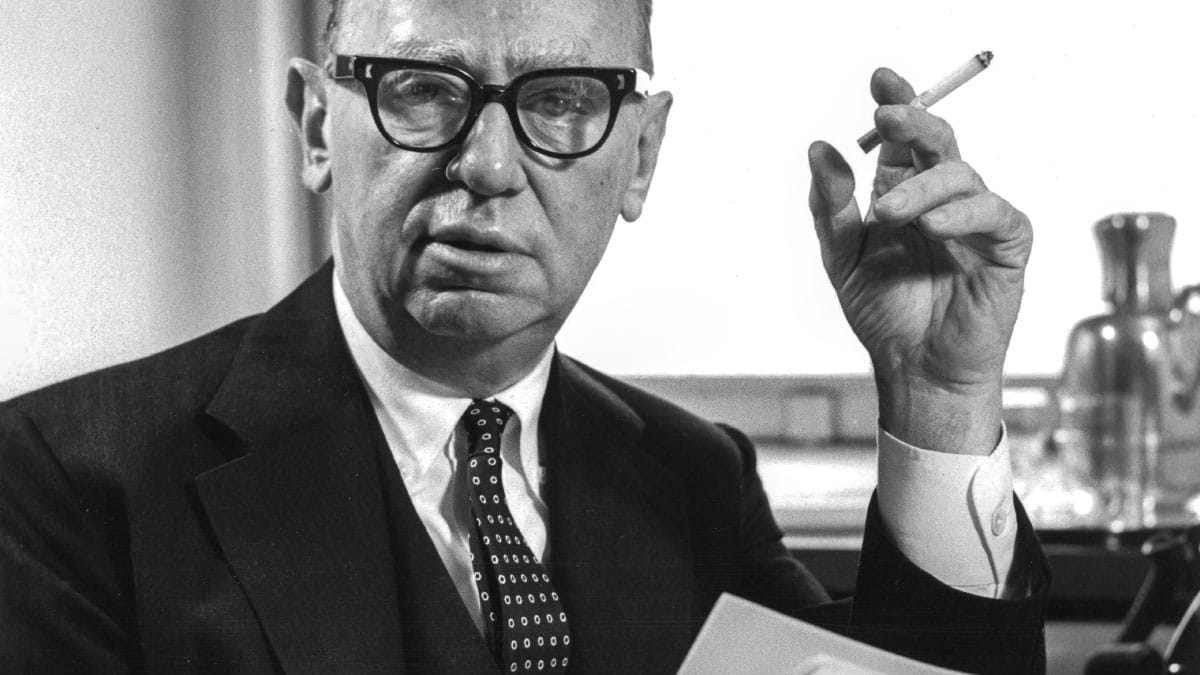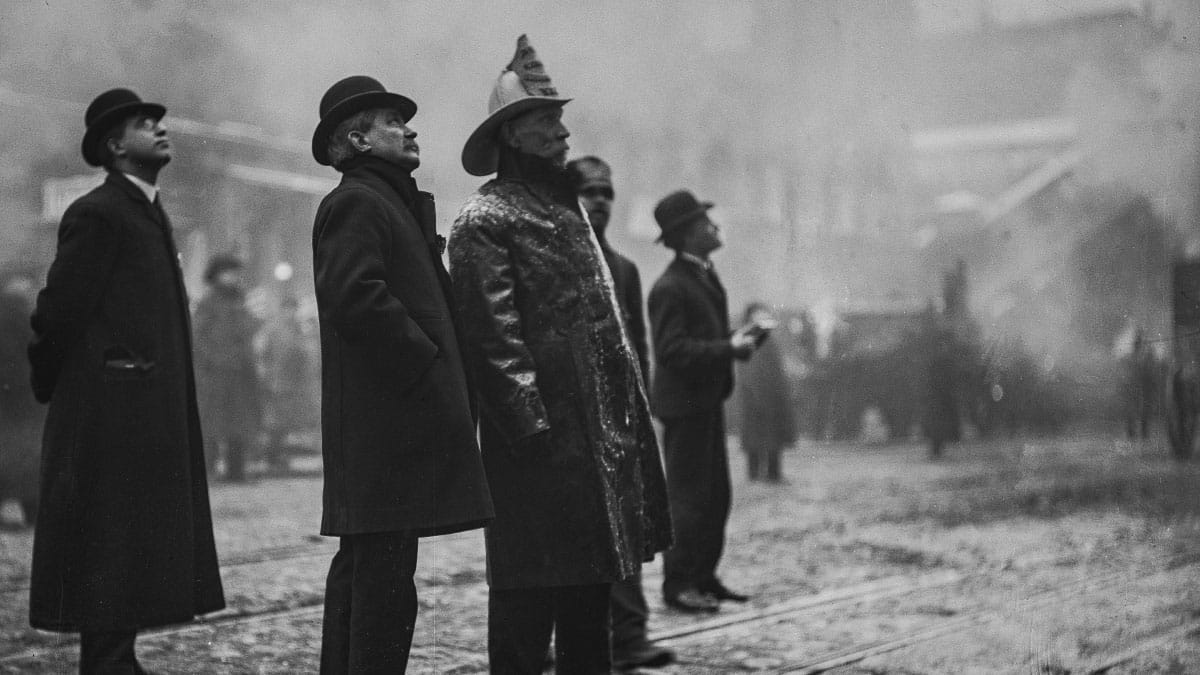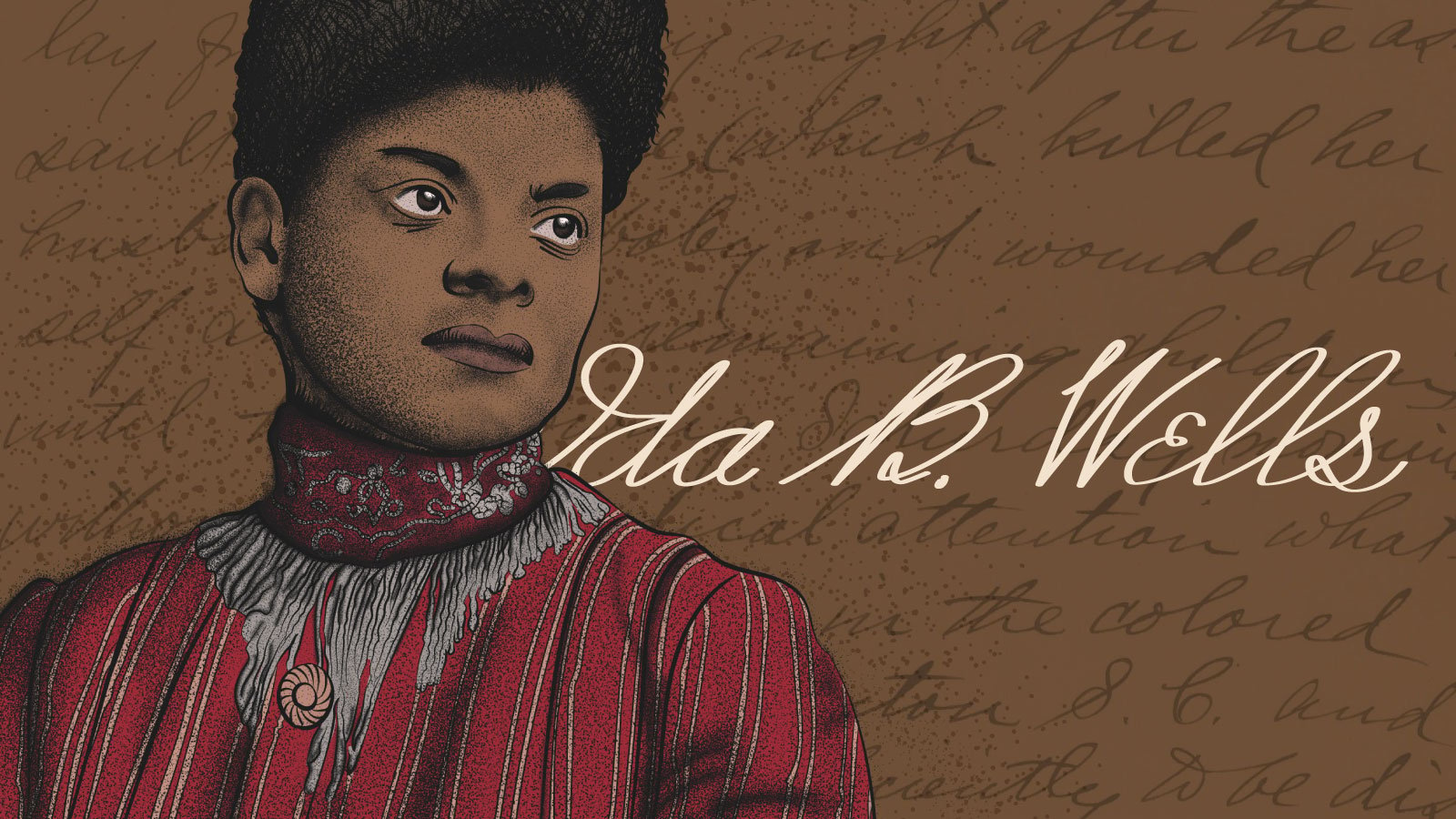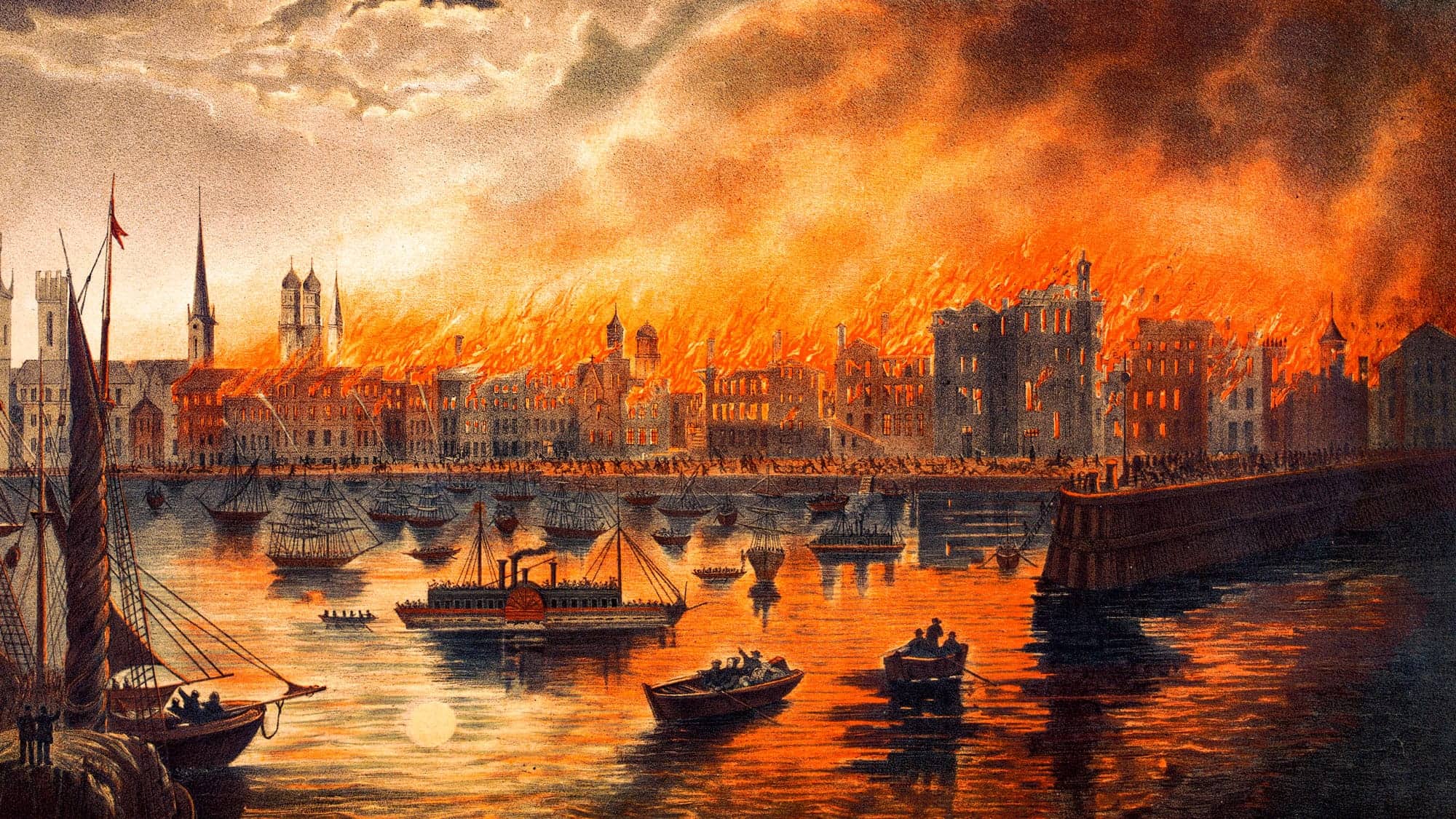Chicago is a city that has been indelibly marked by tragic fires. The Great Chicago Fire took an estimated 300 lives in 1871. The Iroquois Theater fire took 602 more in 1903. And in 1958, a tragic Catholic school fire in the city’s Humboldt Park neighborhood took the lives of 92 children and 3 nuns. The fire at Our Lady of the Angels was an unimaginable tragedy that shook a parish and changed a community.
This article contains descriptions of a deadly school fire that some readers may find disturbing.
Our Lady of the Angels Parish
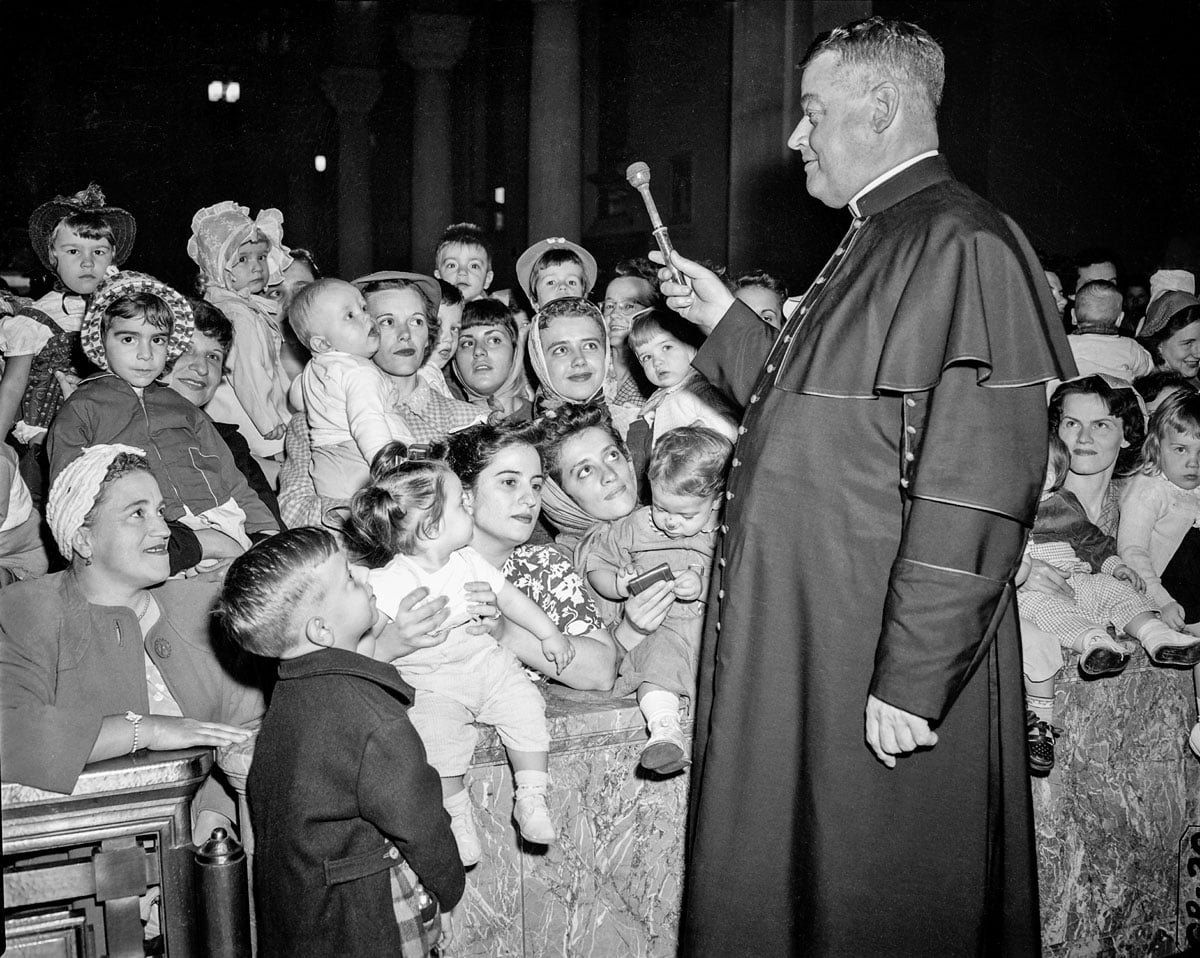
It’s often said that Chicago is a city of neighborhoods, but in the 20th century, it was also a city of parishes. With nearly 2 million Catholics in the Chicago Archdiocese in the 1950s, the parish was the center of the lives of many Chicagoans.
“At this time, people knew where you were from by what parish you belonged to, and that was an identifier, almost more identifiable than the particular neighborhood that they lived in,” Kathleen Sprows Cummings, professor of history at the University of Notre Dame, told Chicago Stories. “Where you worshiped, where you sent your kids to school said a lot about your demographic, your ethnic group.”
One such parish was Our Lady of the Angels. When it opened in 1894, it was a mostly Irish Catholic parish. But by the 1950s, many of those Irish immigrants’ children and grandchildren had moved to the suburbs, and Italian American families had taken their place. Our Lady of the Angels is a perfect example of the idea of ethnic succession, Cummings said, where one group moves up economically and out of a community and another moves in.
Our Lady of the Angels was located in Humboldt Park, a mostly working class community at the time, with modest bungalows and two- and three-story apartment buildings. As with many Catholic parishes, Our Lady of the Angels had a school for students in kindergarten through 8th grade right next door to the church.
In 1958, Our Lady of the Angels had approximately 1,600 students. Father Joe Ognibene was one of several priests who greeted students every morning.
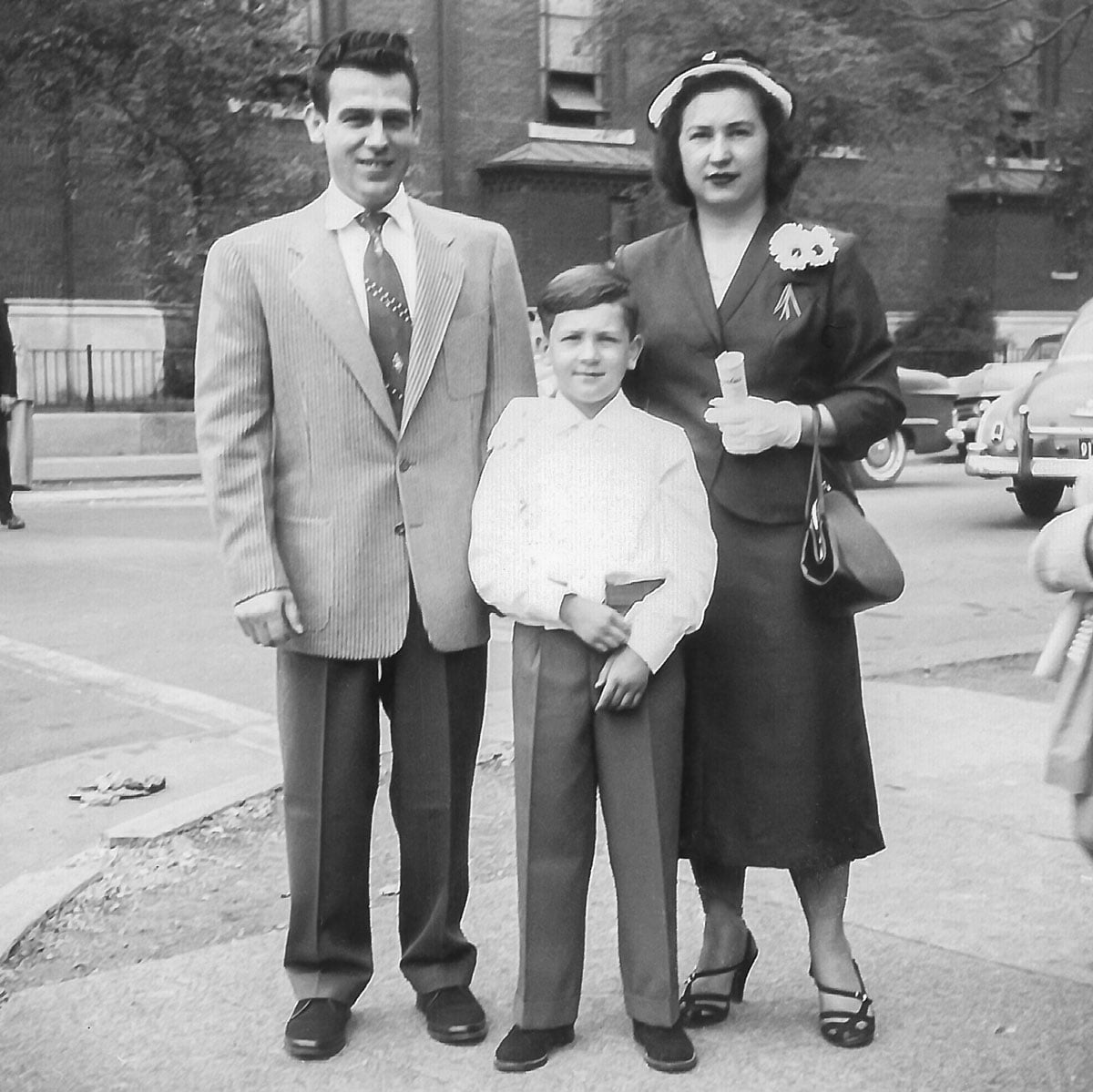
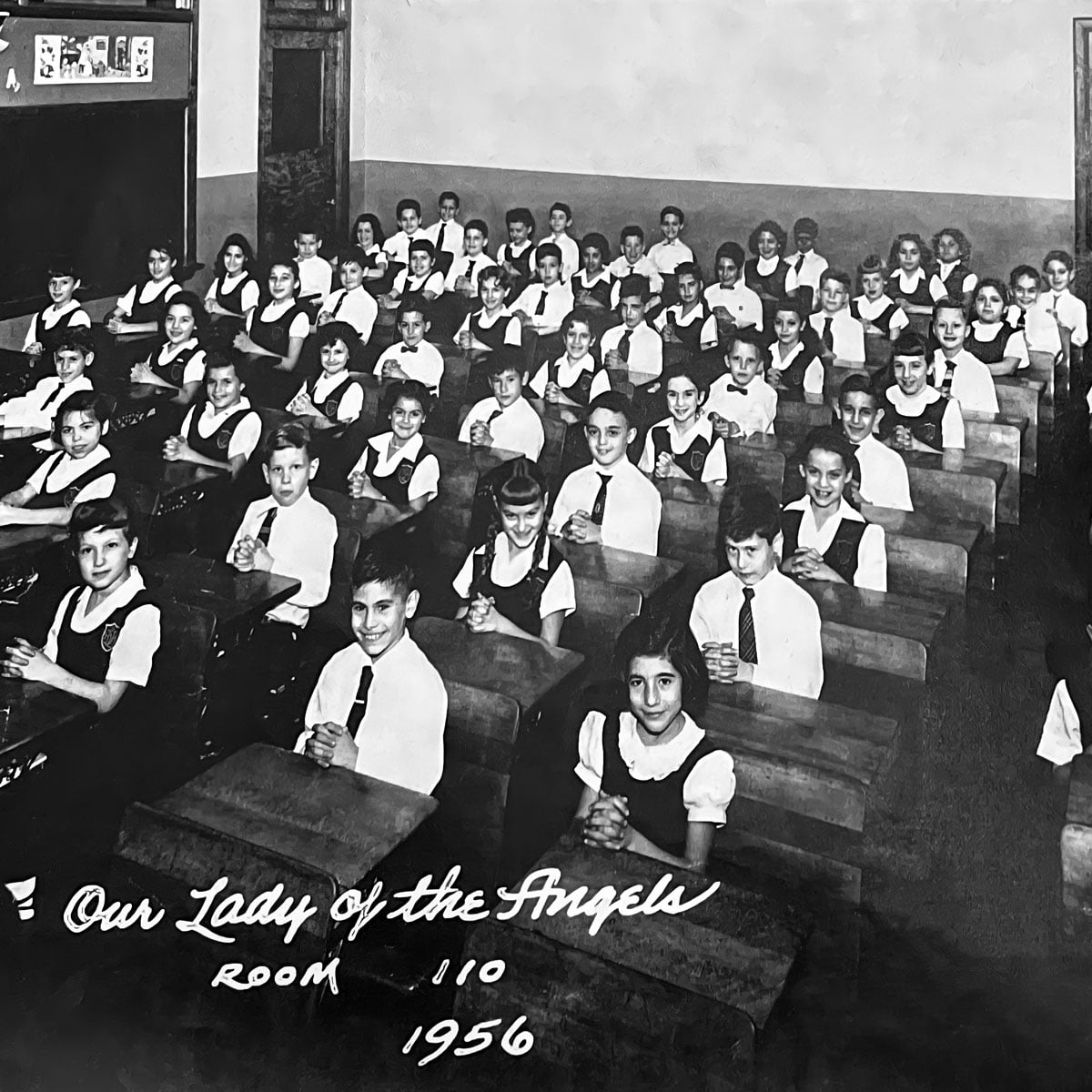
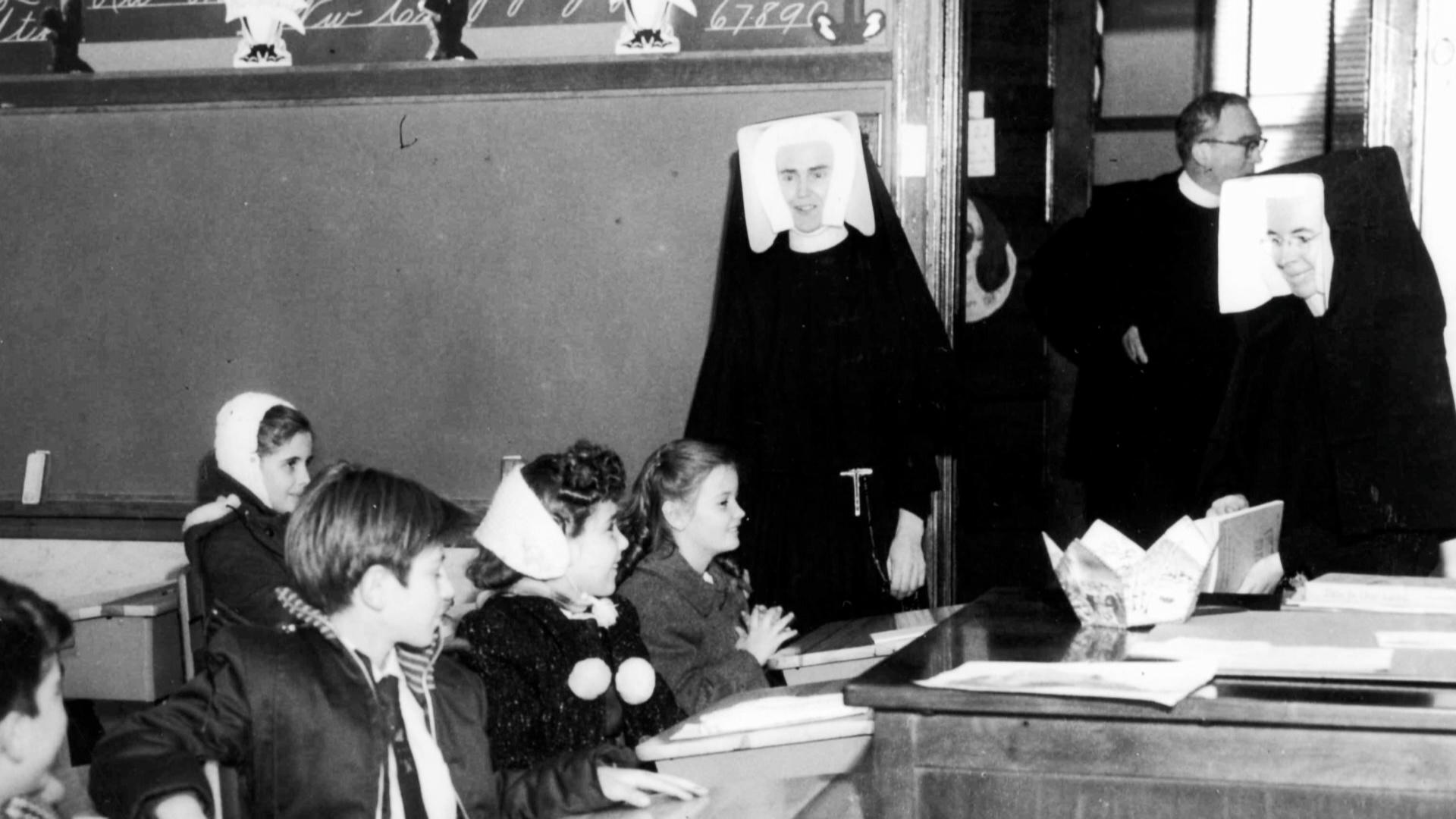
“He could throw a football farther than any of us, taught my brother how to punt a football on the football team. He was so well-liked and so [much a] part of our parish – just a really wonderful human being,” Matt Plavonich, who was a student at the school, told Chicago Stories.
The students – girls clad in navy blue and white uniforms, boys in ties – made their way to their classrooms, where nuns from the Sisters of Charity of the Blessed Virgin Mary were the teachers.
“The nuns were strict at that time. You had to do what they said. I mean, they came around with that ruler,” former student Concetta Bellino said with a laugh. “If I went home and complained, my mother would always take the teacher’s side.”
"We knew that nuns cared about us. We knew that without a doubt. After school, they weren’t going to their kids’ soccer game – we were their family, so they were very close to us. I got a great education."— Matt Plavonich, former Our Lady of the Angels student
With the recent baby boom, some classrooms held up to 60 students. The two-story (plus basement) school was originally built in 1903, with an additional wing in 1910, and had 24 classrooms spread out over two wings connected by an annex. Five of those classrooms – rooms 208, 209, 210, 211, and 212 – would become the scene of a tragedy that would shake all of Chicago.
The Fire
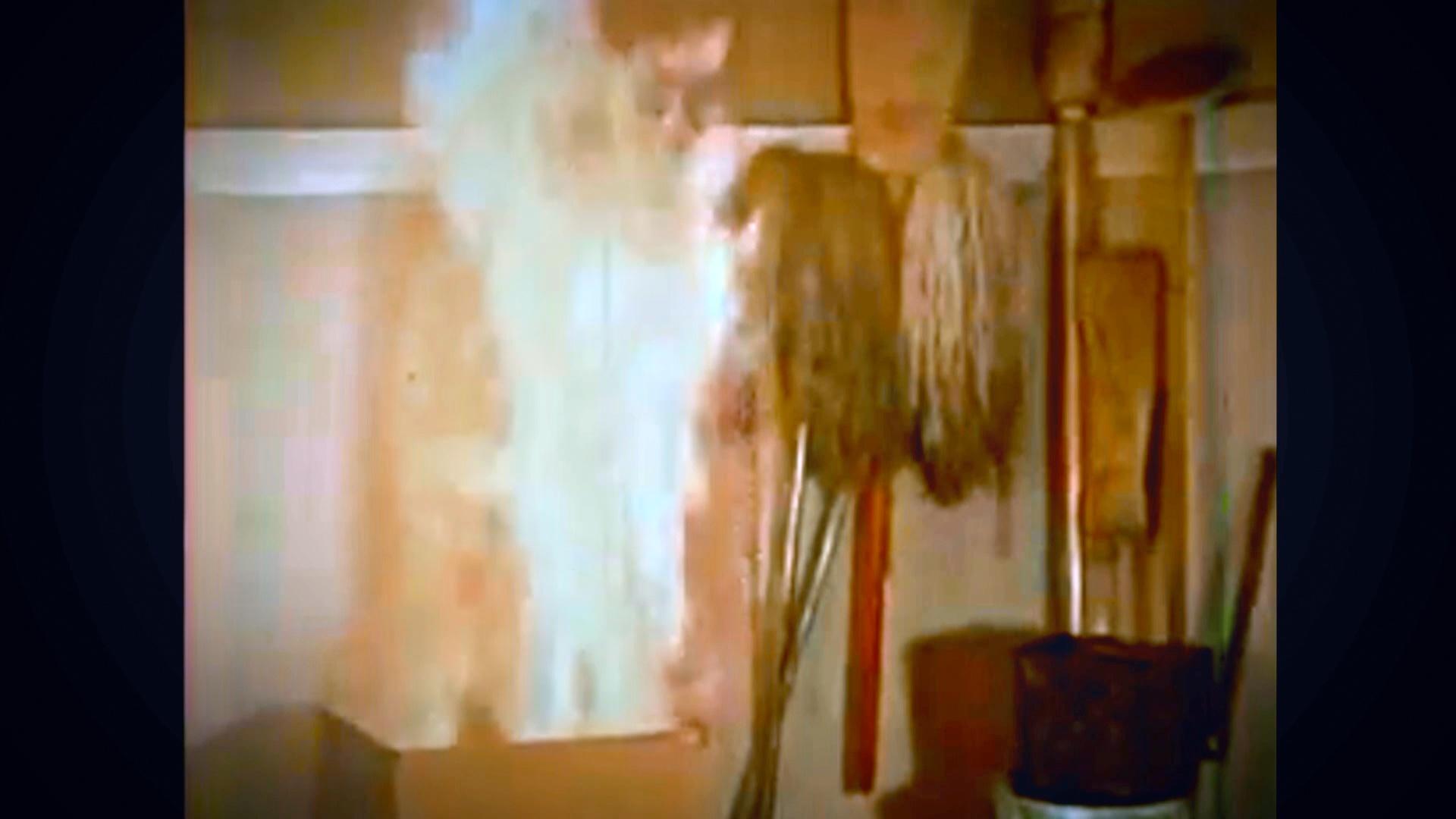
Monday, December 1, 1958 was a cold, early winter day, the first day after the Thanksgiving holiday. As students eyed the clocks toward the end of the school day, a fire was burning in a cardboard trash can full of papers in the school’s basement.
The fire burned undetected for 15 to 30 minutes. Eventually, the flames, along with billowing smoke and hot gas, came up the stairwell. Windows in the stairwell shattered in the heat, bringing in more oxygen to fuel the flames. Heavy doors on the first floor prevented the fire from spreading there, but on the second floor, there were no fire doors, so it tore through the second floor hallway. The flames had also spread up a pipe into the cockloft between the ceiling and the roof. The blaze was already out of control by the time anyone in the building noticed a problem.
Carlos Lozano was in his fifth-grade classroom, room 212, with more than 50 other students when he spotted smoke coming under the door. He raised his hand to get the attention of his teacher, Sister Mary Clare Therese Champagne.
"I said, ‘Sister, there's smoke coming in under the door.’ So she calmly walked over to the door, and she opened the door and a dark cloud of smoke came in. She shut the door. And I remember feeling one of the few times in my life actually scared."— Carlos Lozano, former Our Lady of the Angels student
Lozano said the classroom said a quick prayer – “the express version” of the Our Father or the Hail Mary – and then the students quickly went to the window. Students all around the school attempted to flee out the windows, but the old building had tall ceilings, so the drop from the second floor was 25 feet. Some students jumped, fell, or were pushed amid the chaos. As smoke filled the classroom and choked the air, Lozano pulled himself out through the window and fell two stories.
Eighth graders Rosalie Guzzo and her twin brother, Frank, were in room 209 as smoke poured in. Rosalie, who was afraid of heights, was too afraid to follow Frank, who had dropped to a canopy awning that was just below their classroom window.
“It was so hot, and we were choking, I thought we were going to die,” Rosalie told Chicago Stories. “I wanted to get air. The window that we were able to get to was the window where Mr. Tortorice and Father Joe [were], thank God.”

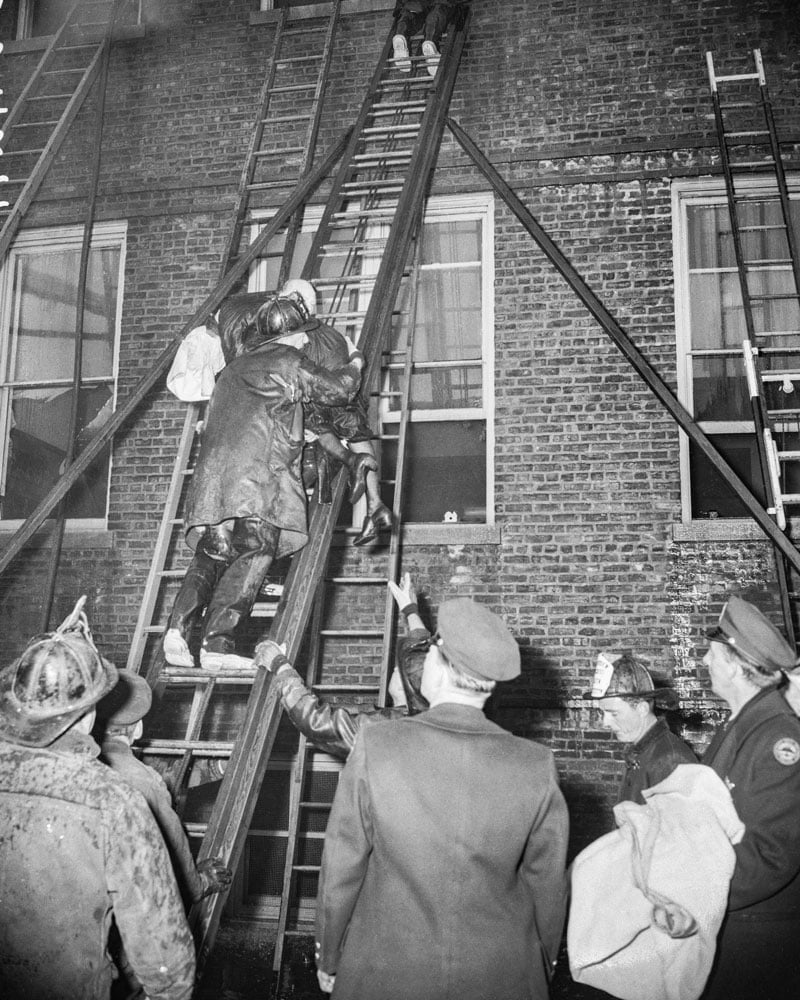
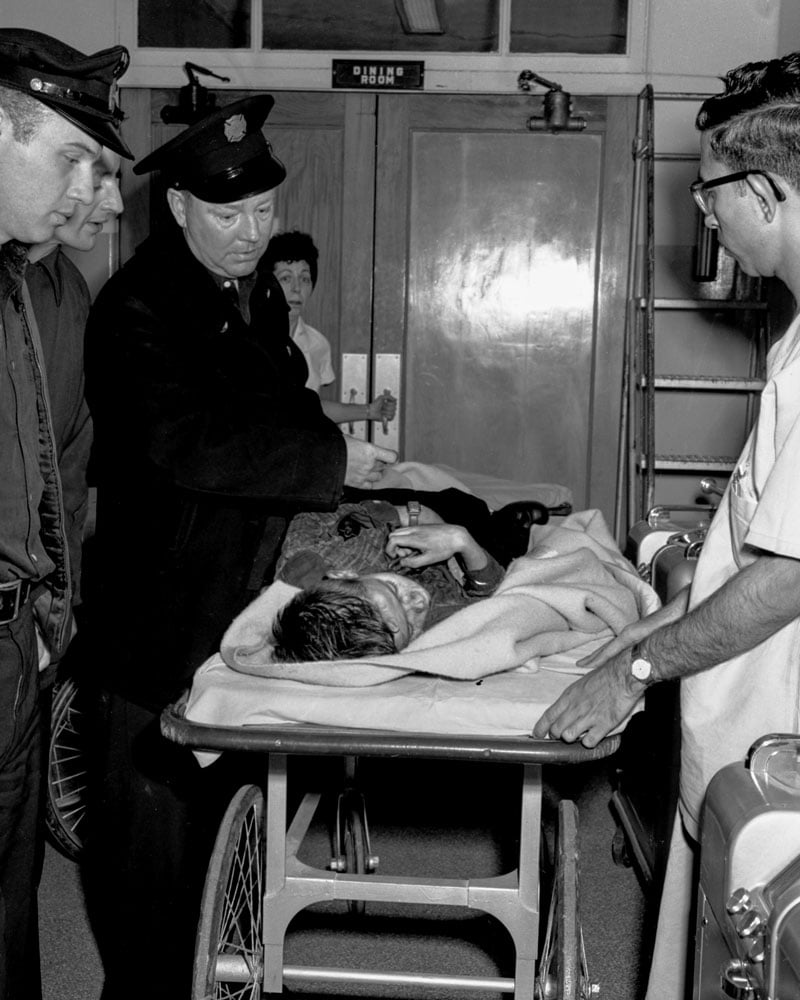
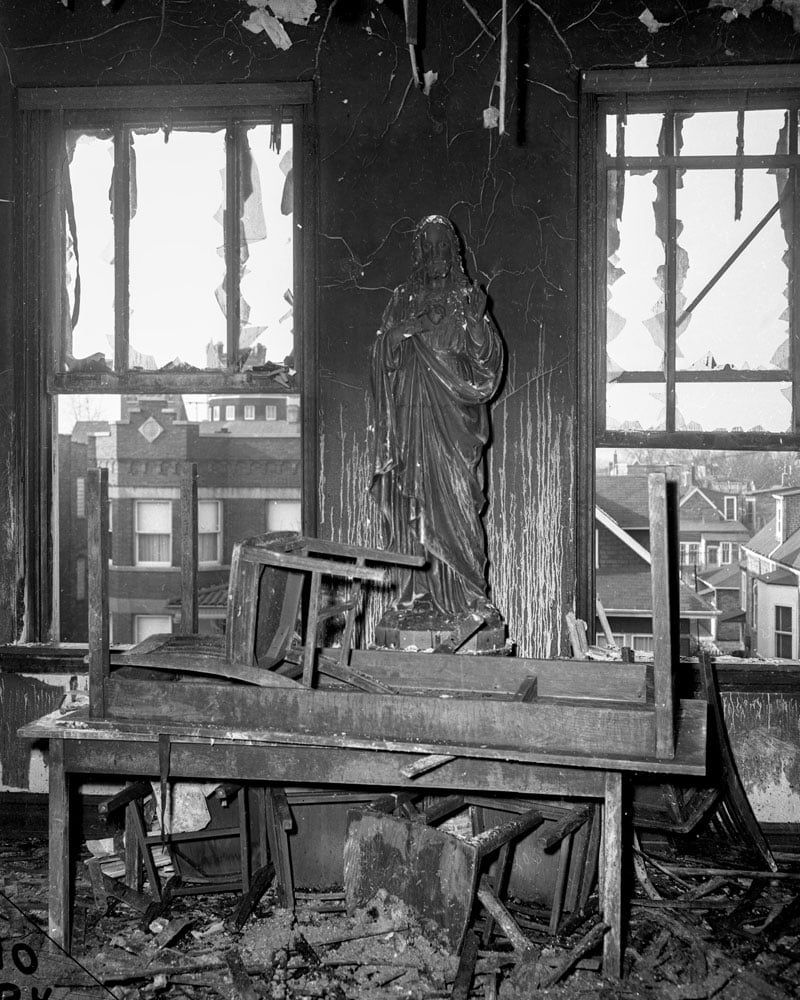
(2) Firefighters carry a nun down a ladder.
(3) An injured boy arrives at the hospital for treatment.
(4) A statue of Jesus is left badly charred in the aftermath of the fire.
Images: Chicago History Museum, Chicago Sun-Times Collection
Sam Tortorice, a parent who lived across from the school, brought a small ladder over to the canopy. Tortorice and Father Joe climbed onto the canopy to rescue Rosalie and other children trapped in the classroom. Other children were rescued in similar ways – by janitors, parents, and other staff.
Outside the school, some parents had arrived to pick up their children at the end of the day. The scene they found was horrific, with students falling or jumping from windows and black smoke billowing from the building. Hundreds of children had already escaped, but many more were still inside. Some neighbors brought ladders to help rescue the children, but they were too short to reach the windows. Some 200 firefighters and 100 police officers soon arrived, rescuing 160 children who were still trapped in their second-floor classrooms. But the firefighters were initially delayed – first, after receiving the address to the rectory rather than the school and again, due to a locked gate in the courtyard between the two wings of the school.
Ron Sarno and his sister, Joanne, were in room 210 with other fourth graders as the room quickly filled with black smoke. They, too, made for the windows, and somewhere in the chaos, Ron got separated from his sister. He was either pushed out the window or he fell, he said.
“I recall doing a somersault in the air, seeing the first-floor window go by real quick, and I landed on my feet and fell backwards,” Ron told Chicago Stories. “I remember looking up and some of the roof caved in.”
The roof collapse was catastrophic. By the time the firefighters made it to the second floor, it was too late for the nuns and children still trapped inside, including Joanne. Ron’s brother, William, also died in the fire. Firefighters reported finding deceased students with their hands still clasped in prayer.
The Aftermath: “It Need Not Have Happened”
After the flames were extinguished, the Our Lady of the Angels parish and the rest of Chicago were in shock. On the day of the fire, 87 children died. Five more died of their injuries in the weeks and months that followed. Three nuns, Sister Canice Lyng, Sister Clare Therese Champagne, and Sister Seraphica Kelley, also died, bringing the total fatalities to 95. Sister Canice reportedly died with her body draped over her seventh-grade students.

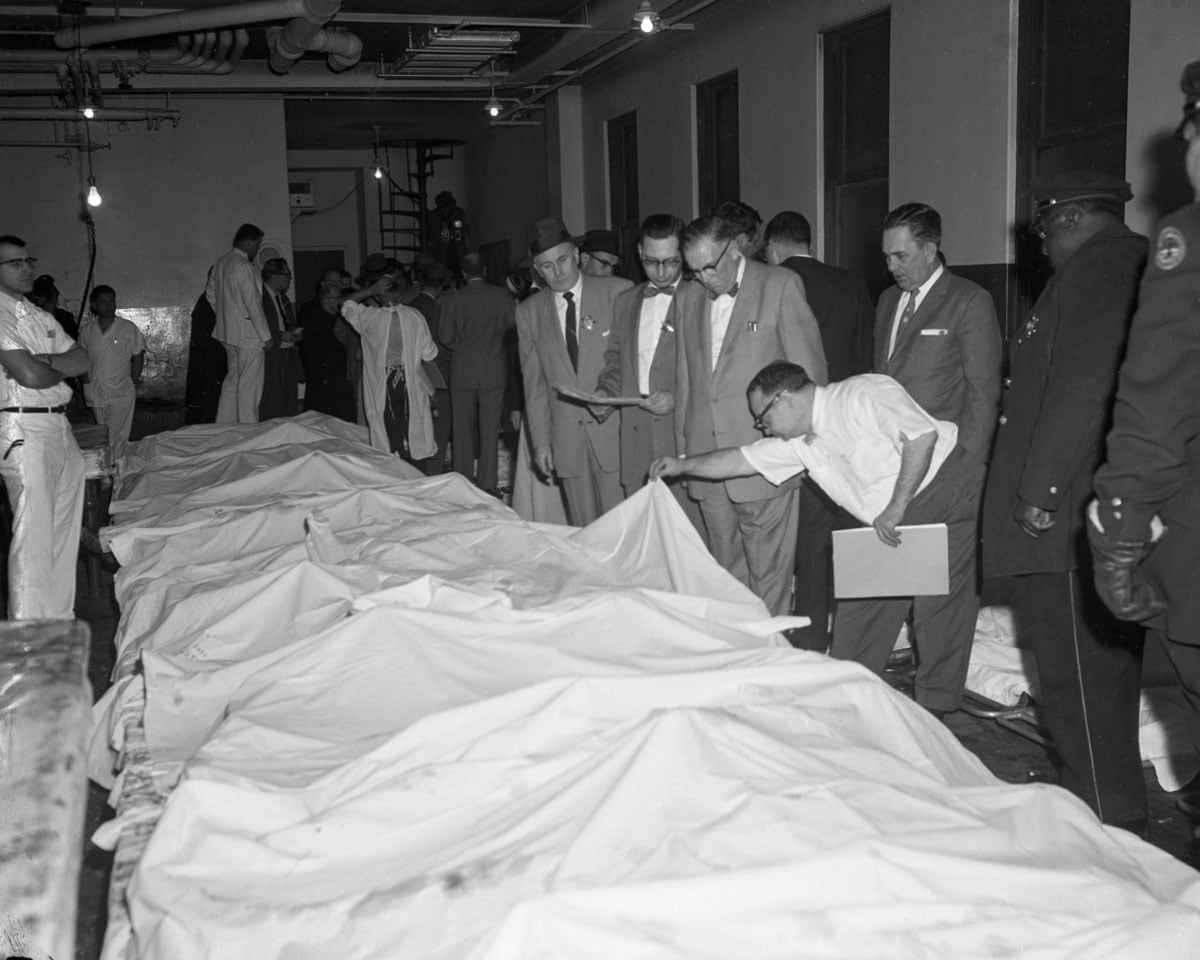
At the Cook County Morgue, grieving parents had to identify their children’s bodies. Father Joe attempted to comfort the parents.
Serge Uccetta, a seventh grader in room 209, escaped down a ladder with the help of a janitor. He told Chicago Stories that the grief spread throughout the surrounding community.
"It was a tragedy for the neighborhood. Even my mom and dad were saying that must have affected everybody on the block. And it did. There wasn’t a street that didn’t lose a kid and sometimes more than one on our street. We lost at least two or three."— Serge Uccetta, former Our Lady of the Angels student
Some 77 other children, many of whom were rushed to St. Anne’s Hospital, suffered injuries such as broken bones, burns, and smoke inhalation. Carlos Lozano suffered a broken pelvis from his fall out the window. Luciana Mordini was in room 208 and was either pushed or fell from the window. She suffered burns to one of her arms. Someone put her in the back of a car and took her to the hospital, where it took several hours for her family to find her.
“I would be at church at Our Lady of the Angels, and my scars would be noticeable, and you’d hear people whispering, ‘Oh, she’s one of God’s angels. God’s saved her,’” Mordini told Chicago Stories. “I hated that, and I started wearing long sleeved shirts all the time for years and years and years.”
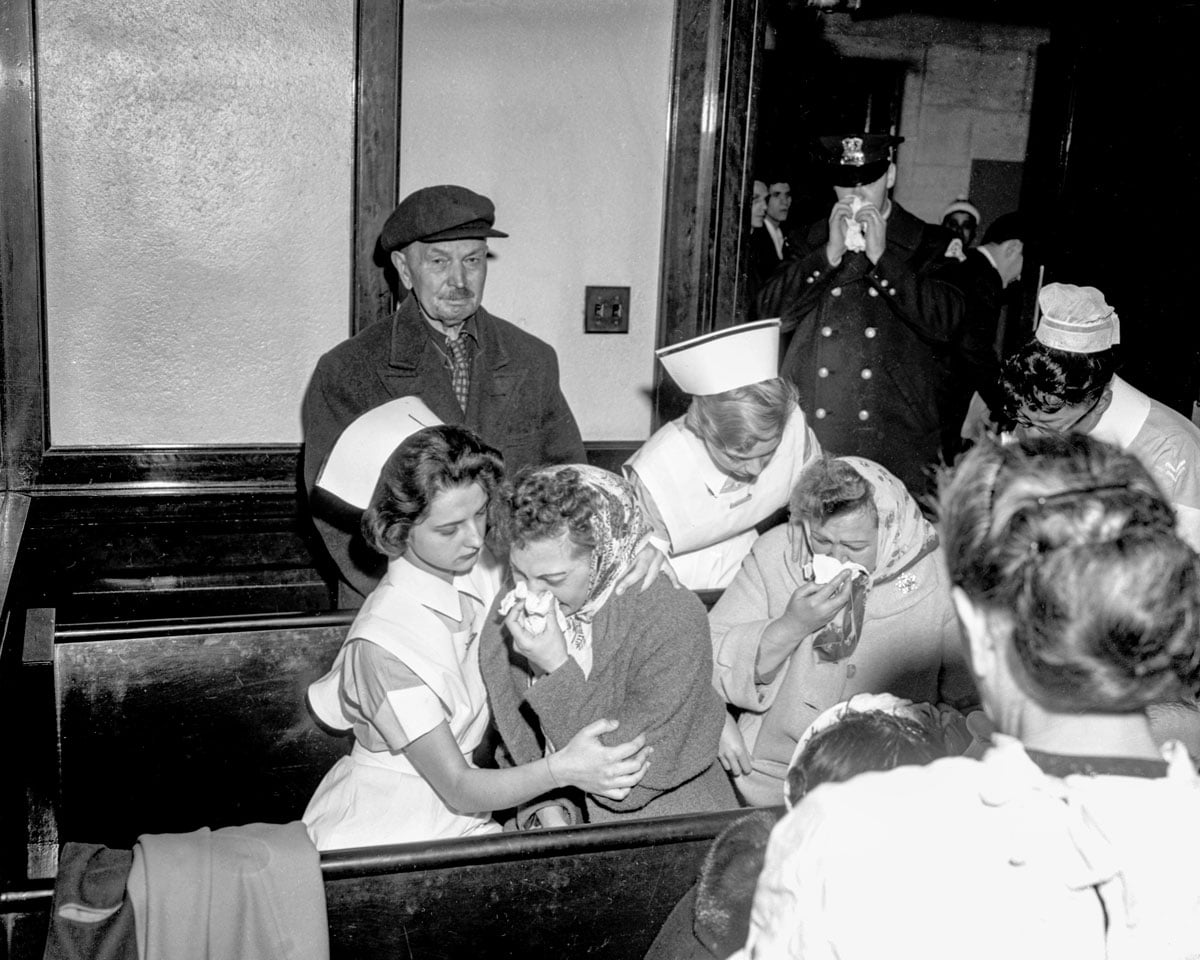
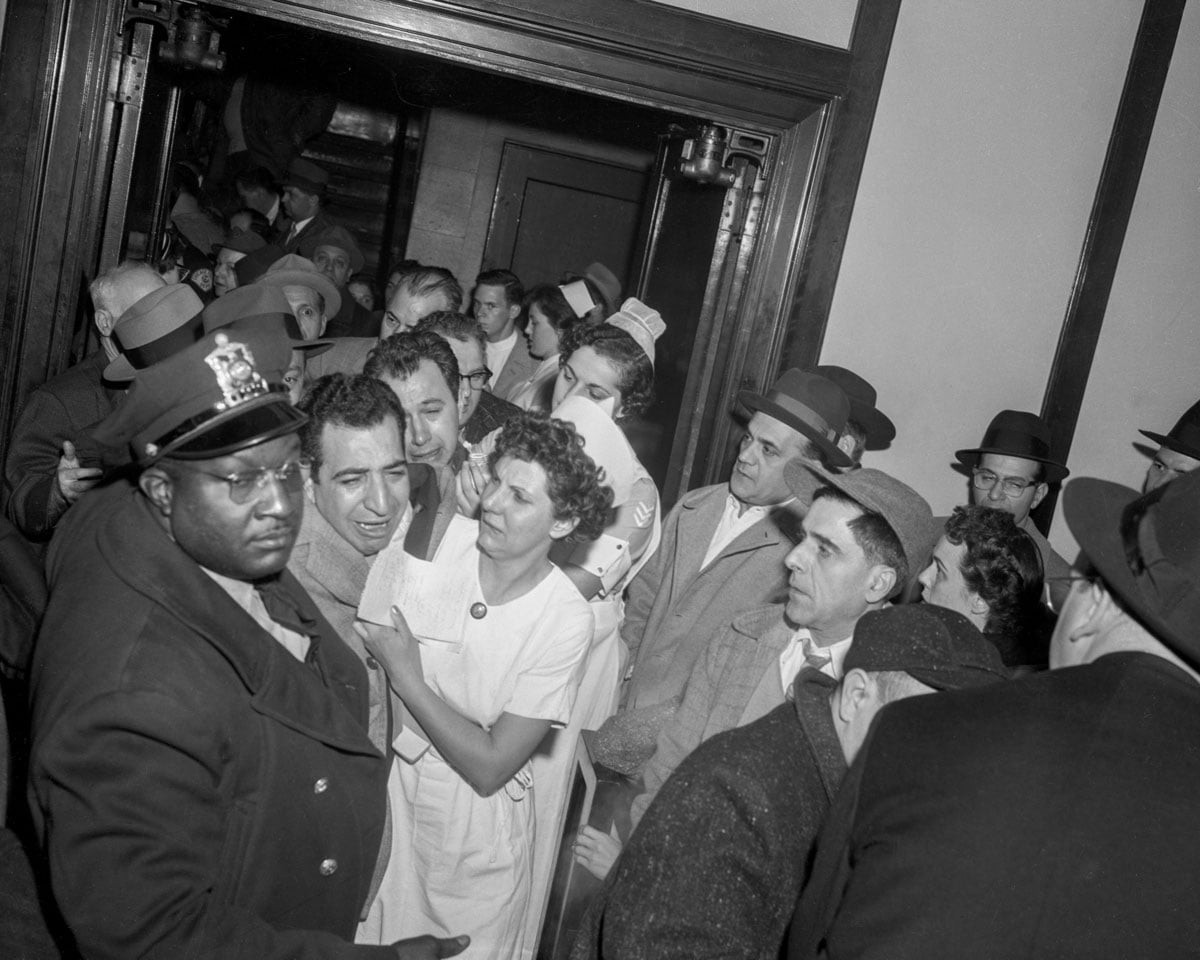
Some of the wounds were not visible, and, according to many of the survivors, much of the community wouldn’t speak of the tragedy, leaving children to process on their own.
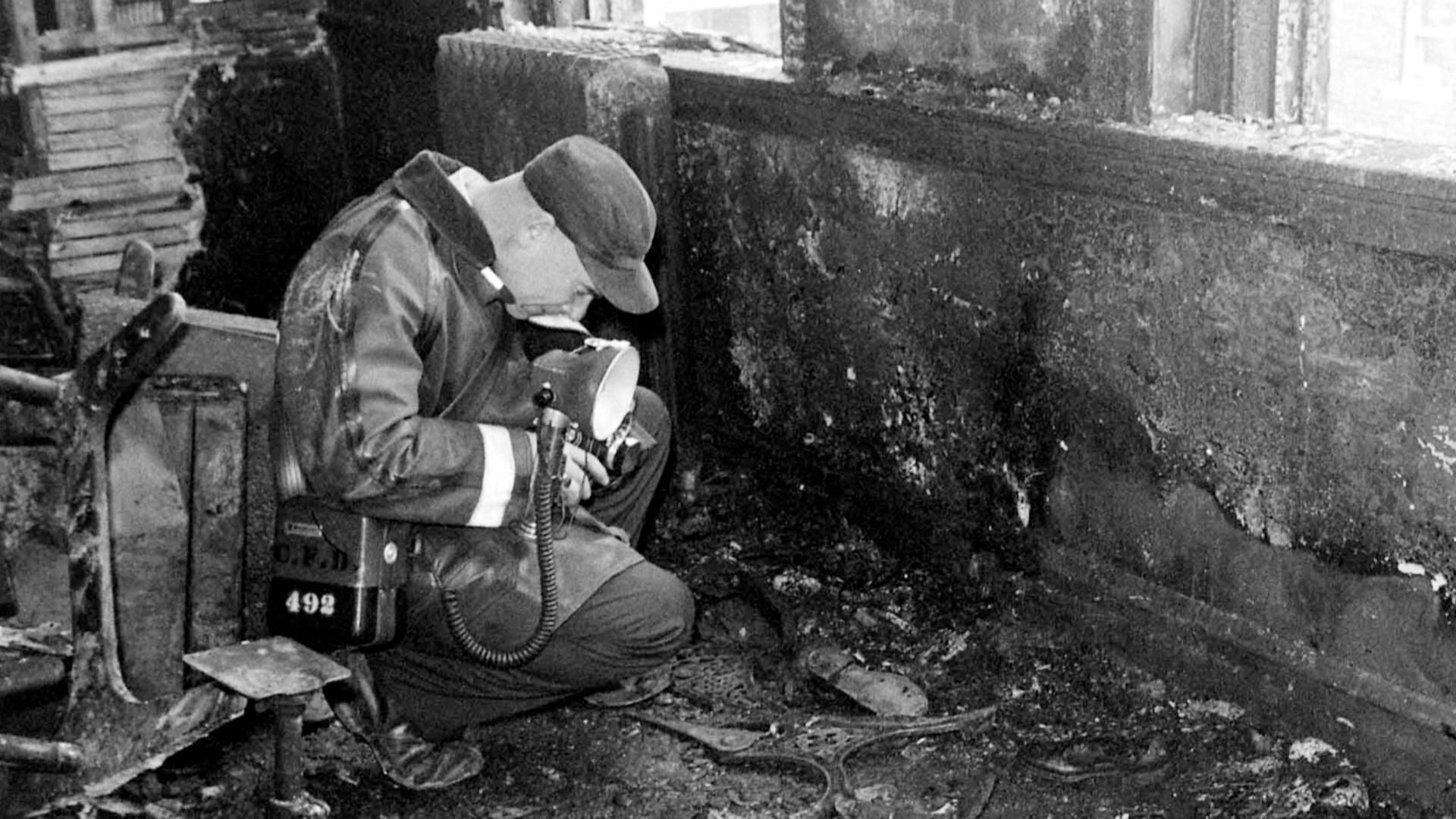
“There wasn’t counseling available to kids who felt traumatized by the event, and there were kids who were traumatized. I was fortunate I was able to cope and deal. Others had a much more difficult emotional time dealing with what happened and why, and how they were affected,” Uccetta said. “People were treated if they were physically injured, but back in those days, [counseling] wasn’t done as much. That’s the way things were. It’s unfortunate.”
In the weeks after the fire, the Cook County Coroner’s Office led an investigation into the cause of the fire which read, “We have reached the conclusion that the cause is undetermined.” Years after the fire, a teenage boy who was arrested for arson in Cicero admitted to setting the fire in the basement of Our Lady of the Angels. The boy later recanted his confession; it was dismissed in family court for being improperly obtained, and no evidence ever emerged to decisively name the boy. The official cause of the fire is still undetermined.
How the flames spread contributed to the high number of casualties. A report from the National Fire Protection Association pointed to a number of issues with the Our Lady of the Angels school building. There was a lack of sprinklers, only one fire escape, no fire door on the second floor, and no smoke detectors. The fire extinguishers were virtually unreachable, as they were mounted 7 feet from the floor. The building itself – including the stairwells that could have served as escape routes – was covered in highly flammable wood. One subhead in the report read: “It need not have happened.” The Archdiocese of Chicago paid roughly $3 million in wrongful death and injury lawsuits.

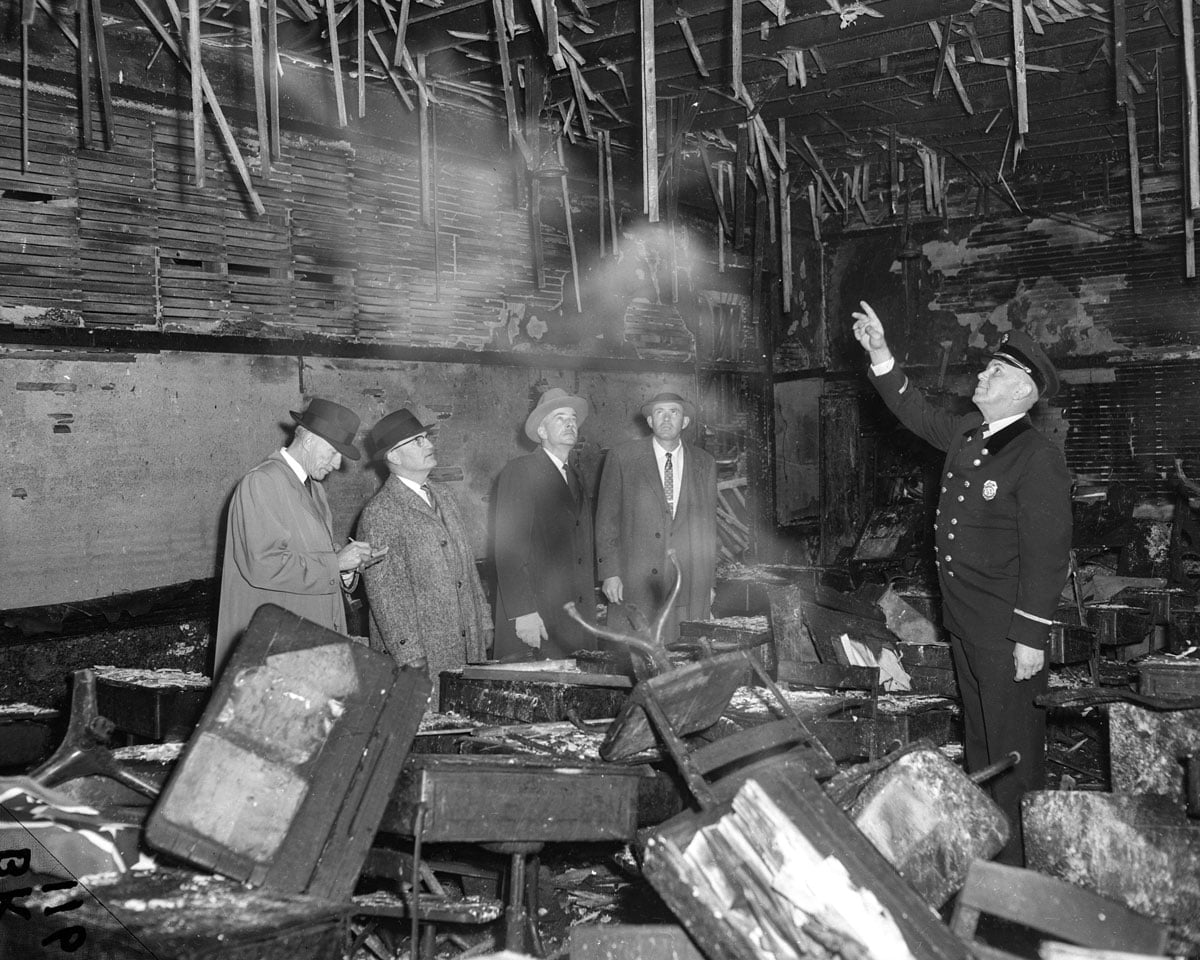
Technically, however, the school had been deemed up to code just two months prior to the fire. Since the building was older, according to John Kuenster, author of To Sleep with Angels, it had not yet been required to catch up to the most recent fire safety standards, which had been updated in 1949. The tragedy spurred action in Chicago and in the rest of the country, however. The Chicago City Council required the installation of school fire alarms that were linked directly to the Chicago Fire Department, and thousands of schools around the country enacted more up-to-date fire codes.
A new school was later built on the same site, but in the 1960s, the demographics in the neighborhood began to change, and many of the students and their families had moved on. By 1999, the school closed due to low enrollment. Today, the Mission of Our Lady of the Angels operates out of the newer school that was built in 1960, serving the community with a food pantry, clothing distribution, and other forms of community outreach.
Though they have long since left their childhood neighborhood, many of the survivors still recall that day in detail and remember the friends and classmates they lost. For many, it has been a lifelong burden.
Annette Danesi, who escaped room 209 without injury with the help of Father Joe and Mr, Tortorice, noticed that a lot of her fellow survivors went on to help others.
“When we were starting to have our reunions, we started asking everybody what they were doing. We heard so many nurses, firemen, a few doctors that were working in burn units,” Danesi said.
Uccetta said he can still remember the names and faces of his schoolmates who died in the fire, including Edward Pikinski, James Morovec, and Roger Ramlow.
“It’s difficult at my age, even now, thinking back to the kids that I knew that are gone and the fact that they haven’t lived a life like I’ve lived and seen their own kids grow up…[T]hey lost out on that experience and life so early. It’s tragic. And that’s hard to ignore. And that’s something to think about all the time,” Uccetta said. “The mind is strange that it remembers things like that. It pulls you back and puts life in perspective.”

